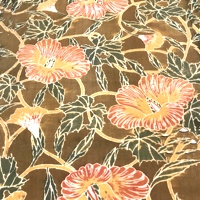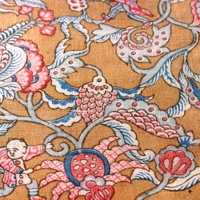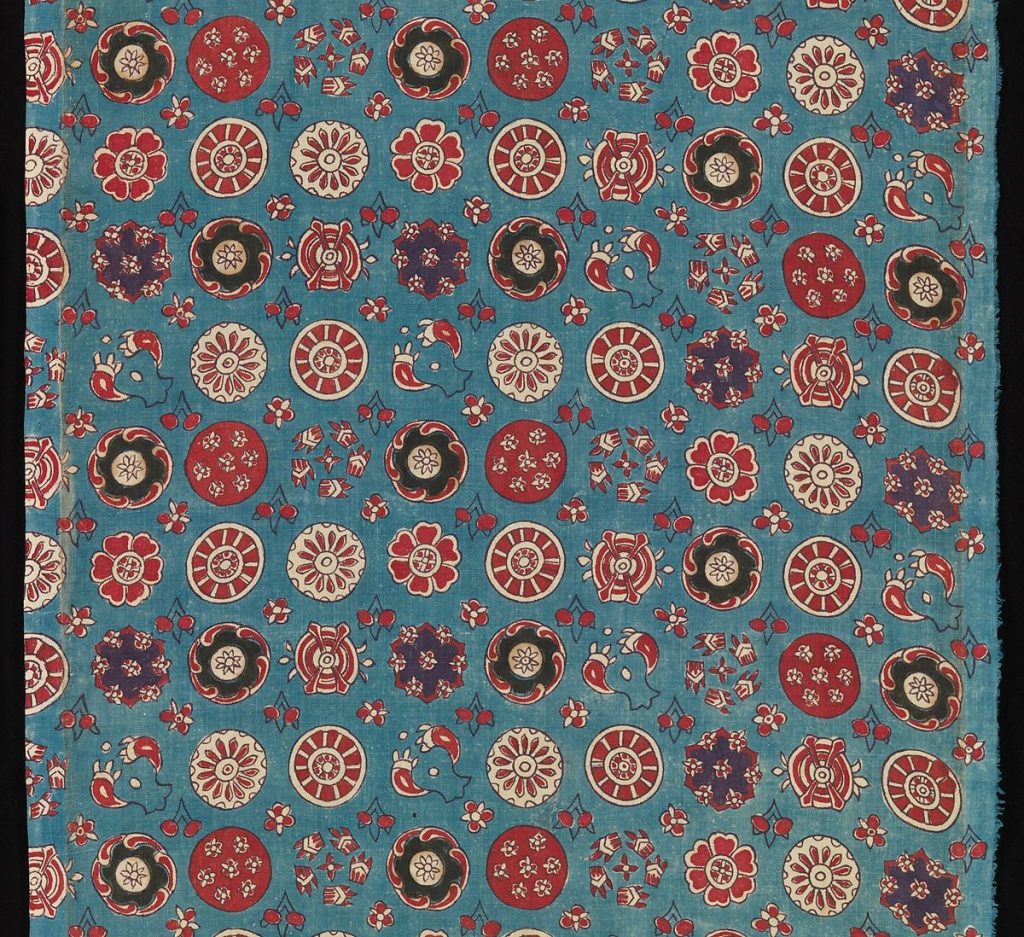
Sarasa has its origins in the early Edo Period (1603 to 1868) of Japan when Portuguese seafaring traders introduced cotton calicos or chintz they acquired in India. Imported Indian calicos were exceedingly expensive and too high-priced to be making into kimonos.
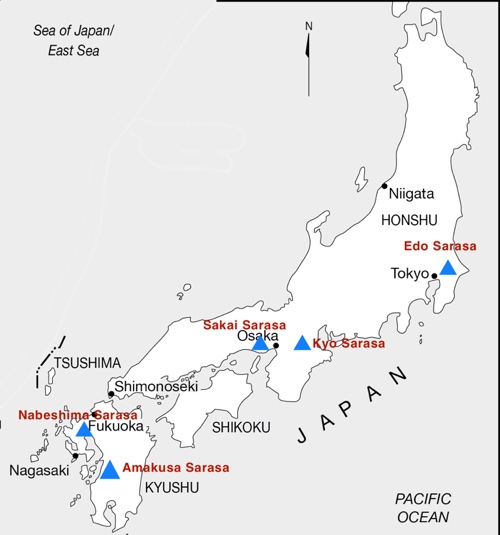
Production of domestic sarasa began in the late 1600s when Japanese dye workers found a method to replicate the designs of Indian calicos from their own style and production techniques. Master Japanese textile makers applied their indigenous katazome textile printing skills into making sarasa (rice paste resist dyeing with washi paper stencils “katagami”). In addition to katazome printing, a few dye works employed woodblock stamping to produce sarasa patterns on fabric.
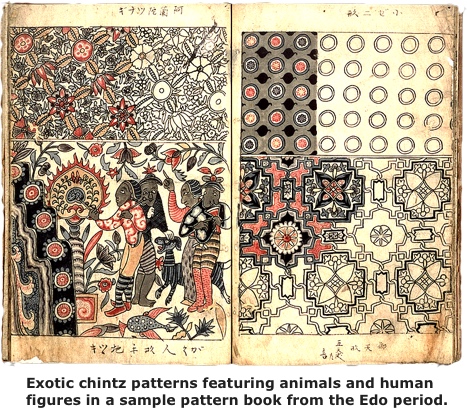
Production of domestic sarasa began in the late 1600s when Japanese dye workers found a method to replicate the designs of Indian calicos from their own style and production techniques. Master Japanese textile makers applied their indigenous katazome textile printing skills into making sarasa (rice paste resist dyeing with washi paper stencils “katagami”). In addition to katazome printing, a few dye works employed woodblock stamping to produce sarasa patterns on fabric. And the dye maker somtimes also hand painted colors on the fabric.
These were characterized by distinctive floral and animal designs with geometric shapes favored by the Japanese. Madder dye derived from the native akaso plant provided Japanese dye masters with the desired red and brown colors favored for producing sarasa prints. The hitherto dominate Japanese indigo blue played a minor role in sarasa colors.
source: https://www.kimonoboy.com/sarasa.html


